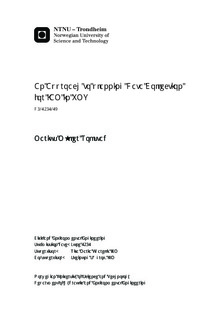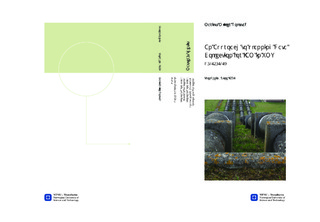| dc.description.abstract | Ageing infrastructure and changing external conditions has invoked the need for performing proactive and predictive asset management (AM) in water utilities through the utilisation of AM tools. AM tools can act as decision support for maintenance and renewal decisions in a water utility, through assessing decision-influencing factors such as criticality, performance, condition, failure rates, hydraulic and economic risk, life cycle cost etc. The tools for AM are dependent on data about the characteristics of the assets (inventory) as well as record data from the assets’ life cycles. The Flemish Water Company (Vlaamse Maatschappij voor Watervoorziening, VMW) is currently in a transition from a reactive to a predictive AM strategy, and is performing this shift by the implementation of several AM tools. However, VMW is a company in which data collection has been executed to a very limited extent in the past, and will therefore be challenged by the lack of available data when implementing these tools for AM. The project described in this document has endeavoured to assess how VMW should (1) ensure that their AM tools are not impeded by data availability and low data quality, and (2) how the collected data can be utilised optimally for AM. These two assessments were made through five work areas (WA): a comprehensive literature study on which factors influence data quality, an analysis of the data needs for buried assets followed by an analysis of the technical and organisational factors in VMW, a case study in Trondheim Vann og avløp and a cost-benefit analysis of data collection. The scope has been focused on data that is relevant for describing the life cycle of buried assets. It was found that the quality of data is likely to be impeded by the dispersed storage structure that is imposed by the AM tools’ proprietary databases. Therefore, it has been suggested to create one central data repository for all life cycle data (a diary database). The database should work as a distributor of data to the different data-consuming applications. Suggestions for the structure and development of this database were made. Further was a comprehensive list of measures for how to stimulate operational personnel to collect data produced. Among the measures were the establishment of data quality indicators, data quality monitoring and communication routines, training, and early data collection methods. Lastly, the cost-benefit analysis showed that VMW could achieve much higher informational benefits if they invest 7.5 % more in data collection (compared to current long-term plans), allowing for tools that assess hydraulic and economic risk of failure to be used (hydraulic criticality, expected unmet demands, combined with cost of failures). The cost-benefit analysis also showed that VMW should search for tools that utilise inspection data better, and that the benefits of extended data about asset interventions should be tested (in selected “trial” service centres) before being collected in full scale. For more details about the results and conclusions, please confer with the Executive summary (chapter VII). A paper was made on the cost-benefit analysis of data collection, and is enclosed in Appendix E. It is suggested to develop the cost-benefit analysis further by (1) measuring the unit costs of data collection and (2) expressing the benefits as reduced economic risk. | nb_NO |

